This post may contain affiliate links. Please read our disclosure policy. As an Amazon Associate, I earn from qualifying purchases.
This no knead Dutch oven bread is the crusty, bakery-style loaf that’ll make you feel like a bread wizard with shockingly little effort. No stand mixer, no kneading, just a bowl, a spoon, and a Dutch oven. With a chewy interior and that crackly, golden crust we all chase, this is the real deal.
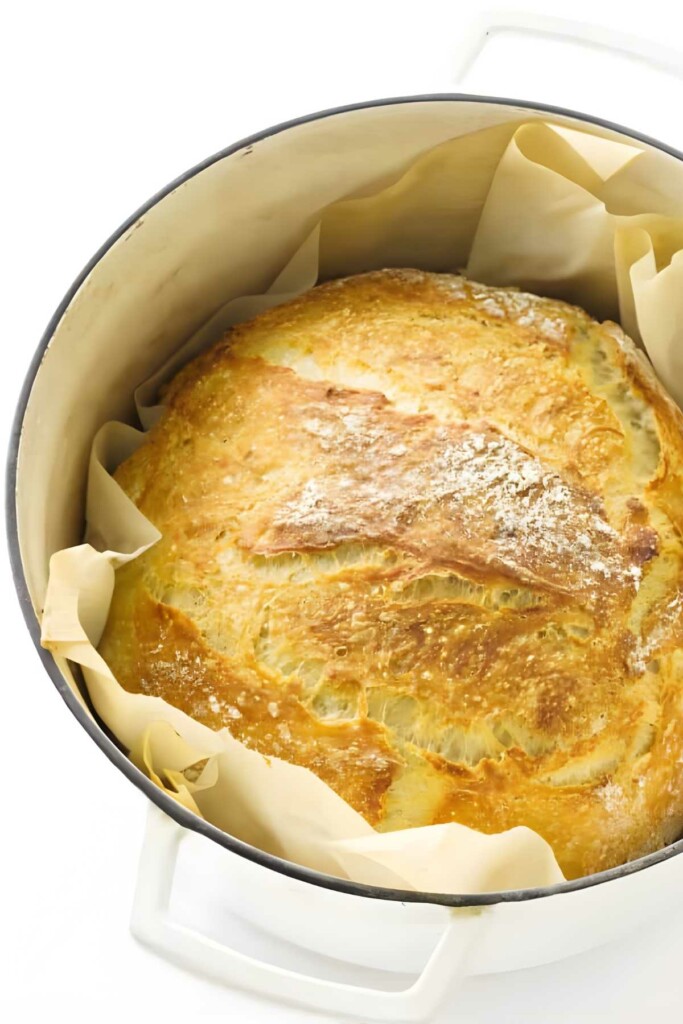
Want a twist on this easy artisan bread? Try my no knead rosemary bread or my Dutch oven cranberry walnut bread next.
Here is Why This Quick Dutch Bread Recipe Works
This 2 hour artisan bread delivers big bakery energy with barely any hands-on time.
No kneading needed: The long rest time lets the gluten develop naturally, so you can skip the elbow grease.
Steam-powered crust: Baking in a Dutch oven traps moisture, giving you that lofty rise and shatteringly crisp crust.
Simple ingredients: Just flour, yeast, salt, and water—but the flavor payoff is huge.
Versatile base recipe: This method works beautifully with variations too, like my no knead rye bread, baked in a Dutch oven for that same crusty perfection.
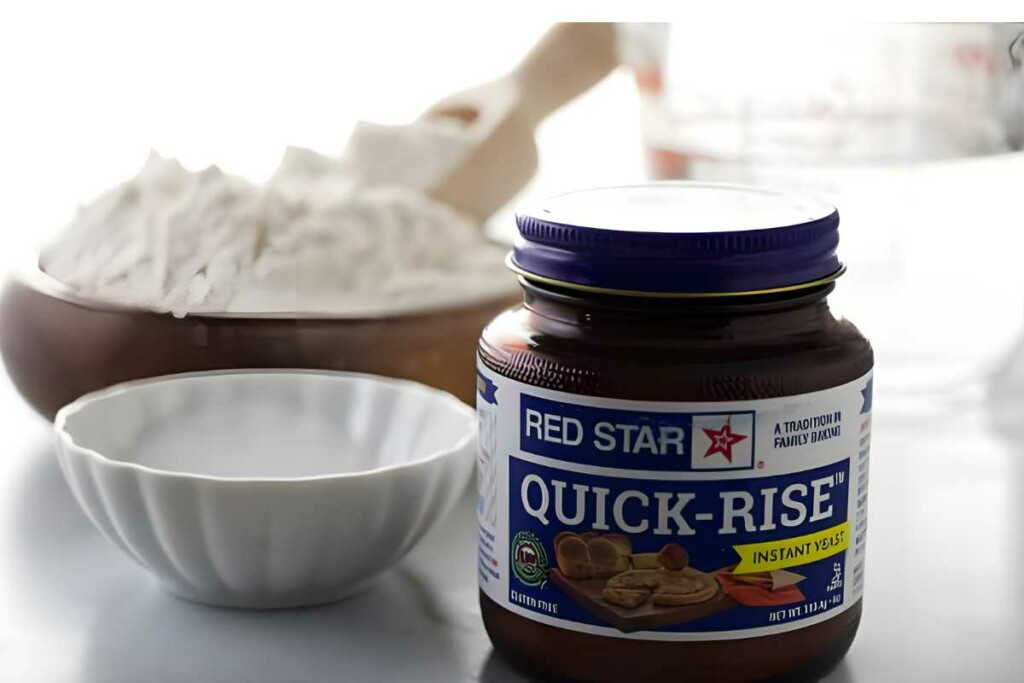
Recipe Tips
Use the right water temperature: Keep it around 100°F. Too hot and you’ll kill your yeast; too cold and it’ll take longer to rise.
Don’t skip the preheat: That Dutch oven needs to be scorching hot to give the dough a good oven spring.
Score before baking: A quick slash on top helps control where the bread expands as it bakes.
Use bread flour if you can: The higher protein content gives a chewier crumb and taller rise.
Serve it with garlic butter: This loaf is begging to be dunked in something delicious. Try my garlic butter sauce for the ultimate upgrade.
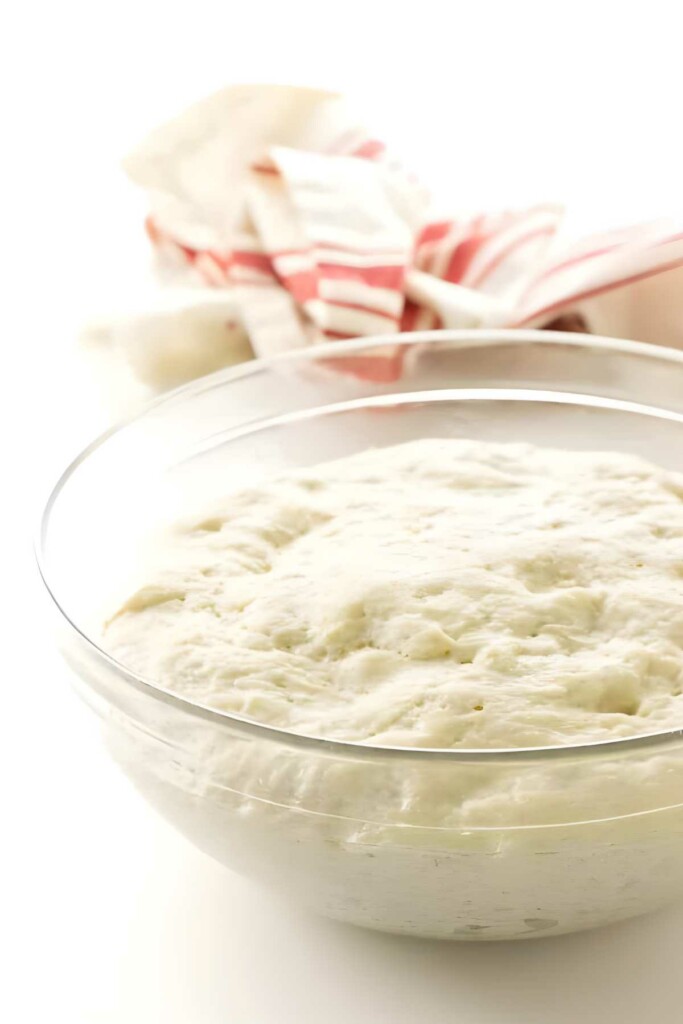
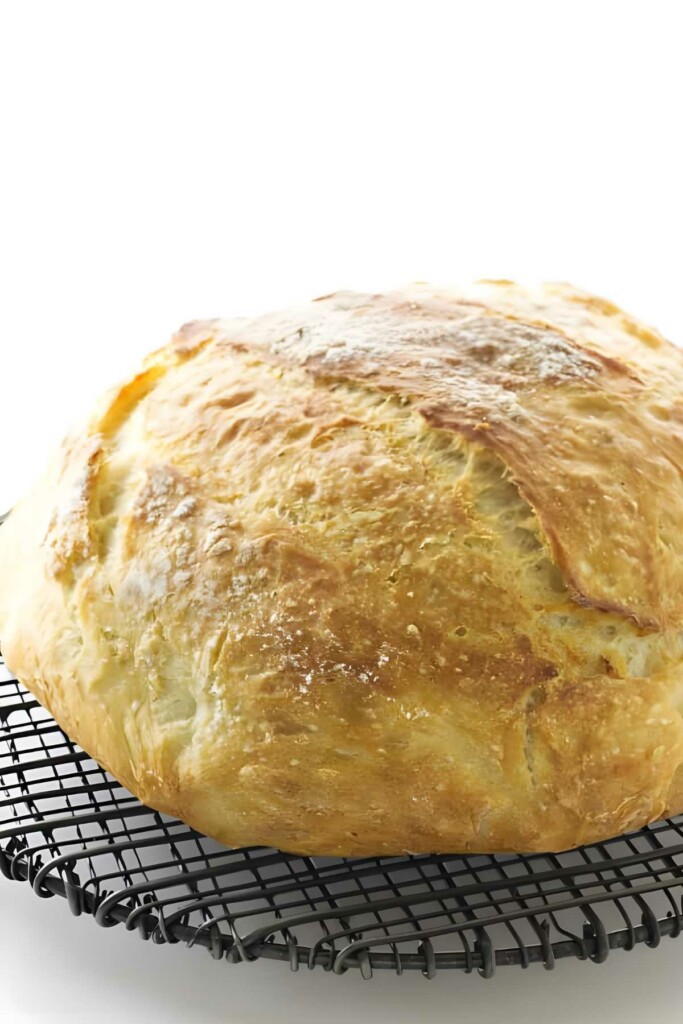
I adapted this recipe to make a sweeter Dutch oven cinnamon raisin bread.
Storing Leftovers
- Refrigerate: Wrap the cooled bread in a clean towel or place in a bread bag and store at room temperature for up to 3 days. Avoid the fridge unless your kitchen is very humid.
- Freeze: Let the loaf cool completely, then wrap it tightly in foil and place in a freezer-safe bag. It keeps well for up to 3 months.
- Reheat: To refresh the crust, reheat the thawed bread in a 350°F oven for about 10 minutes until warm and crisped up again.
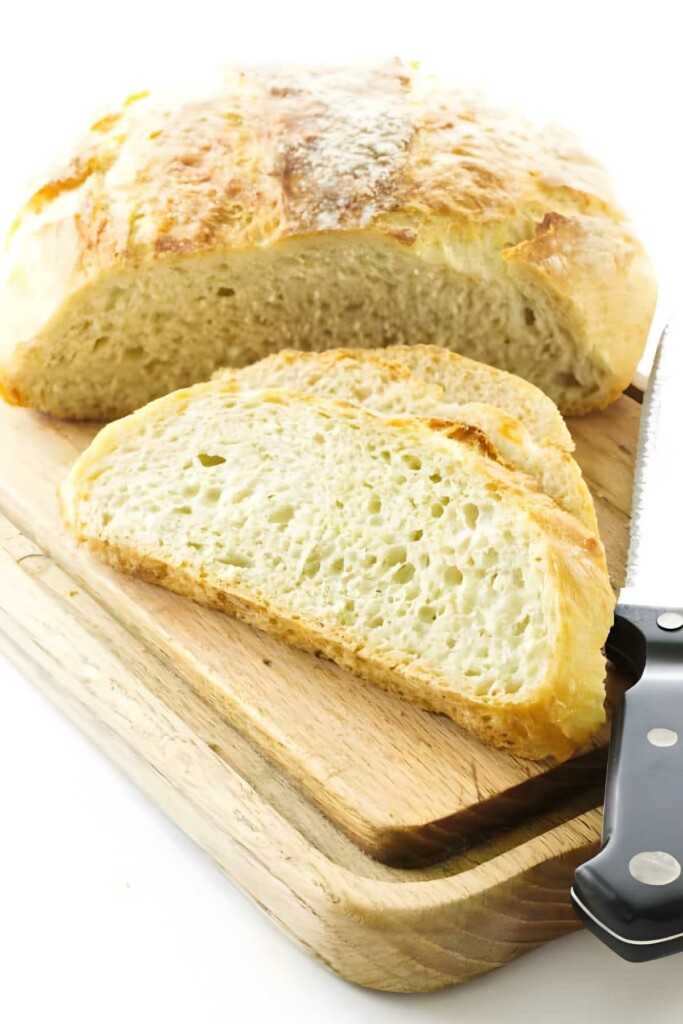
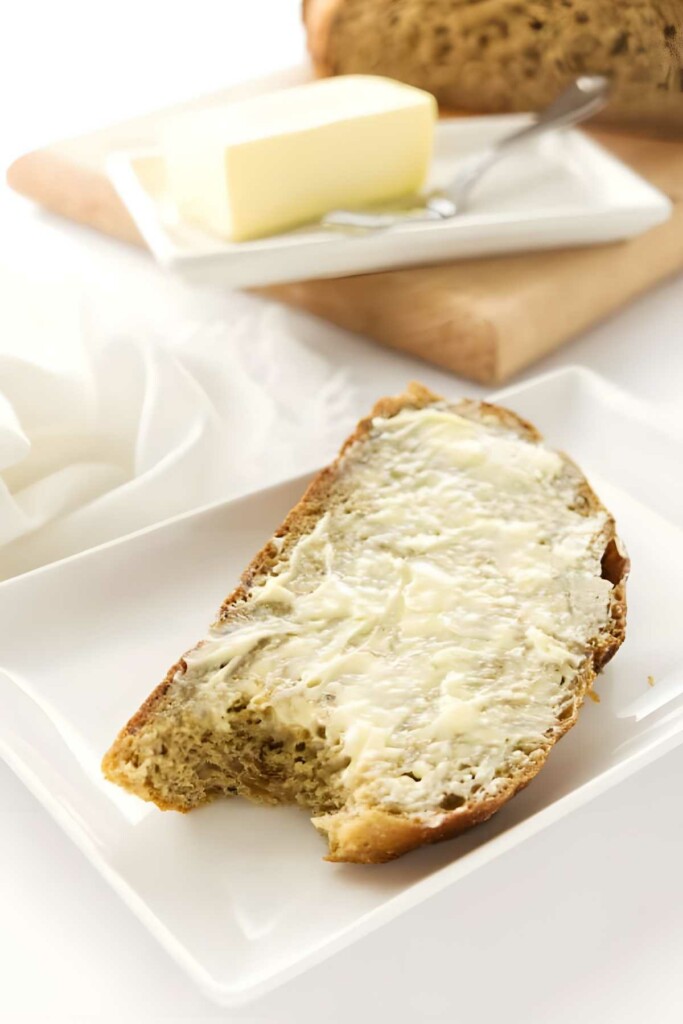
Why No Knead Bread Wins
When you need an easy, dependable loaf that delivers on both taste and texture, this no knead Dutch oven bread pulls through every time. It’s got the artisan look without the artisan effort, and frankly, that’s the kind of kitchen win we all need.
Want to branch out? My no knead focaccia brings the same laid-back method with a totally different vibe.
Pin this now to find it later!
Pin It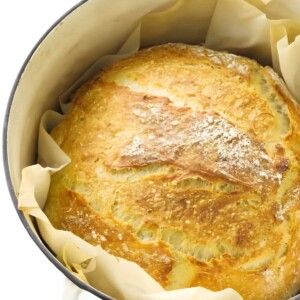
Quick No Knead Dutch Oven Bread
If you make this recipe, please leave a star rating and comment.
Ingredients
- 3 cups all-purpose flour, or bread flour, 360 grams
- 2¼ teaspoons Quick Rise Instant yeast, 1 packet, or RapidRise instant yeast
- 1½ teaspoons salt, 9 grams
- 1½ cups water, warm, up to 100°F; (338 grams)
Instructions
Make the Dough:
- Fluff up the flour before measuring or weighing; then add the flour, yeast and salt to a mixing bowl and stir to combine. Make a well in the center and pour in the water, stir and mix completely . The dough will be soft and sticky.
- Cover the bowl with an oil-sprayed plastic wrap and let stand in a warm spot at room temperature. Let rise for 1 hour. (I like to set the covered bowl on top of the refrigerator).
- After 40 minutes, place a 4 or 6-quart Dutch oven with lid in the oven and preheat to 450°F.
- Sift a light dusting of flour on a large piece of parchment paper and set aside.
- When the dough has rested for the 1 hour, turn it out onto a lightly flour-dusted work surface. Use a bench scraper to turn and fold the dough 5 or 6 times to shape into a rough ball. Dust lightly with flour.
- Place the dough with the floured side down, in the center of the reserved sheet of parchment paper. Dust the exposed top lightly with flour and cover with a fresh piece of plastic wrap. Let the dough rest on the counter top for 15 minutes.
Bake the Bread:
- Carefully remove the Dutch oven from the oven, remove the lid. Remove the plastic wrap covering from the dough, and using the parchment paper as a sling, lift the dough and set it into the Dutch oven. Spray the top of the bread with some water (see notes) and score it with a sharp blade.
- Replace the lid and transfer to the oven.
- Bake for 30 minutes, then remove the lid from the Dutch one and bake the bread for an additional 15 minutes.
- Transfer the hot Dutch oven to the work area and using the parchment paper, lift the bread out and place on a wire rack. Let cool before slicing.
Video
Notes
Nutrition
Nutrition information is automatically calculated, so should only be used as an approximation.
 Like this recipe? Rate & comment below!
Like this recipe? Rate & comment below!More Artisan Bread Recipes
- Sprouted Wheat Buttermilk Sandwich Bread
- Whole Grain Einkorn Pizza Dough
- Sprouted Rye Bread
- Einkorn English Muffins
- 21 Artisan Bread Recipes
Memories Of By-Gone Days:
I have vivid memories of watching my grandma bake bread when I was a kid. She started early in the morning, and it was a full-day affair. With a crew of farmhands to feed, she didn’t make just one loaf, she made batches. Big ones. The old-fashioned way, with serious kneading.
She’d mix everything into a massive lump of dough, let it rise, punch it down (my favorite part), and knead it all over again. I loved when she let me punch the dough and that warm, yeasty smell whooshed up—pure heaven.
After shaping the dough into loaves and giving them one last rise, she’d finally bake them. The kitchen smelled unreal. I can still picture those four golden loaves cooling on the rack, and if it wasn’t too close to dinner, she’d slice off a heel and slather it with homemade butter just for me.
Bread baking has changed a lot since those days, and I think she would’ve loved this easier, 2-hour version. Honestly, give me a thick slice of this toasted bread with butter and raspberry jam, and you can keep your chocolate cake.

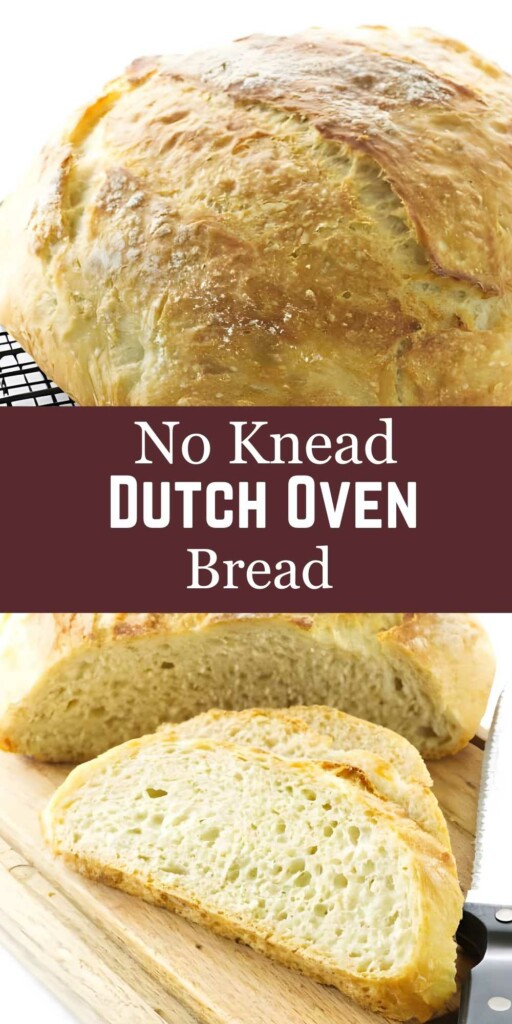
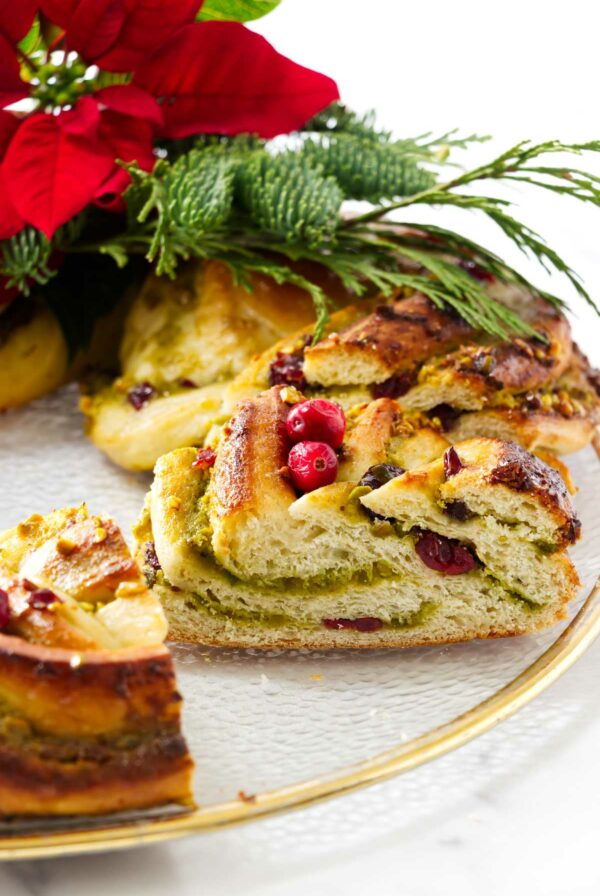
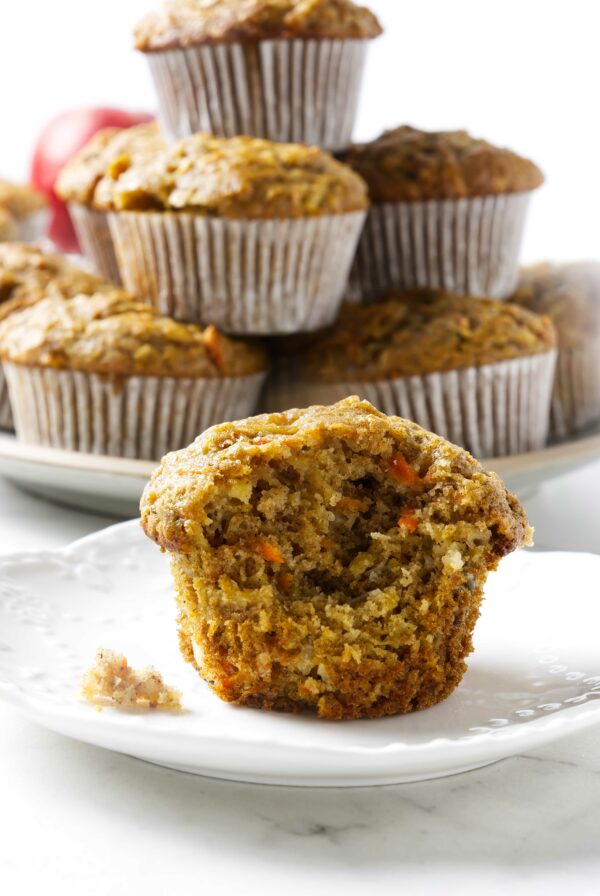

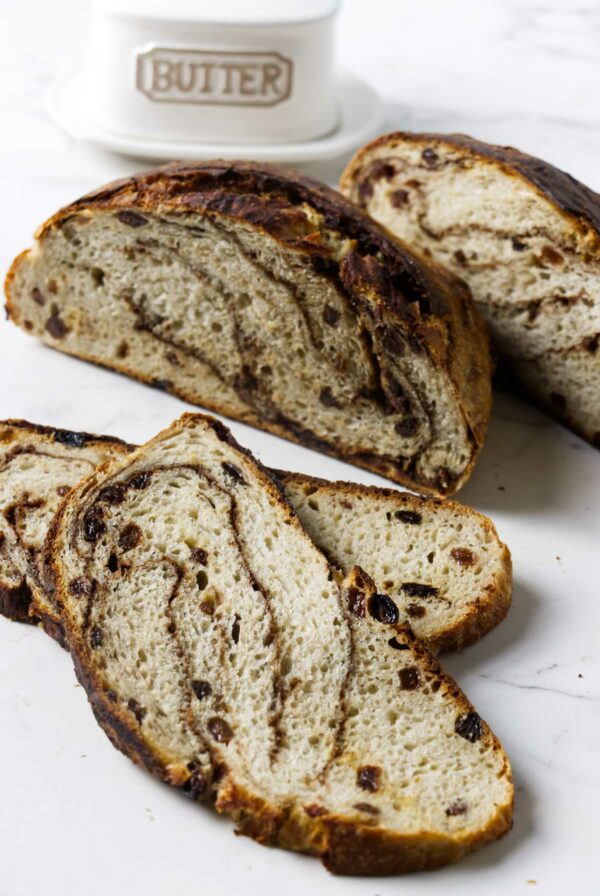










What? Julia Child always said you need to feed your yeast. Your recipe has no sugar in it to feed the yeast. So how does the yeast rise if it isn’t fed?
Great question! Yeast doesn’t actually need added sugar to rise—it feeds on the natural sugars released when flour breaks down during fermentation. Julia Child often added sugar for enriched doughs, but in a simple dough like this, the yeast gets plenty to “eat” from the flour alone!
Fantastic recipe . Thank you.
Hi, Snea, we are so pleased you enjoyed this recipe, thanks for your comments.
Love this recipe! It was my first time making homemade bread and I decided to go with a no knead method. Worked beautifully. Making it again today, three ready to bake! Being Portuguese, I’ve added linguiça and cheese to a few loaves. Delicious…insert chef’s kiss! Thank you
WooHoo! So happy to read this, Natalie! Your creative ideas sound wonderful, thanks for your feedback and review!
No where does it say what temp. For oven
Thanks for your comment. The oven temperature is actually mentioned in the recipe .. it’s 450°F, as noted in step number 3. I know it can be easy to miss details when skimming through a recipe, but I hope you’ll give it another try.
I just made this today and oh my goodness, it’s delicious. Full disclosure, I added a large roasted clove of garlic (smashed) and put it in when I was using the bench scraper. I was a little leery because the dough was very wet and didn’t rise much when the dough was on the “warm spot.” I was unable to score the top and really just ran the lame through the dough. I read reviews after and will certainly try one of the insulation methods for the bottom. Question, was the dough supposed to “rest” on the counter without any warmth? Thank you for this new addition to our meals.
Thank you so much for making the recipe and for your kind words. I’m so glad you enjoyed it! Adding roasted garlic sounds incredible; what a flavorful twist!
Regarding the dough, it doesn’t need any added warmth beyond room temperature for the resting period. If your kitchen runs cool, placing the bowl in a naturally warm spot (like on top of the refrigerator or in the laundry room if you are running the dryer) can help the dough rise a bit more. No extra heat source is needed, though, just a cozy spot out of any drafts should do the trick.
It sounds like you worked through the challenges of scoring the wetter dough, it can be tricky, but as long as it bakes up well, it’s a win! And yes, trying one of the insulation methods for the bottom is a great idea for an even bake.
Really good and very easy! I feel like a baker!;)
Thank you so much! I’m thrilled you enjoyed it and felt like a baker, that’s the best compliment! Thanks for the comment.
I made both the rye and white bread as Christmas gifts for our adult children. They are delicious!! I also did them while watching my grandchildren!! It was so easy❤️
Thank you so much for sharing this! I’m so glad you and your family enjoyed the breads. And wow, making them while watching your grandchildren? You’re amazing!
I made this bread a week ago and family was IN LOVE! I am making it again but have a appointment to go too. My question is can I let the dough rise longer than a hour?
Yes, you can let the dough rise longer than an hour if needed. To slow down the rise while you’re at your appointment, place the dough in the fridge. The cooler temperature will slow the yeast activity and give you a bit more flexibility in your schedule.
When you’re ready to bake, take the dough out of the fridge and let it come to room temperature for about 30-60 minutes before shaping and proceeding with the rest of the recipe.
So easy and so delicious!
Thank you for your comments and rating, Carrie! I am so pleased you enjoyed this bread.
What is the temperature of the oven?
450°F
Just started making bread, this is a wonderful recipe! I have made it several times. Its wonderful!,
Thanks for your comments/feedback, Patty! I, too, love this recipe!